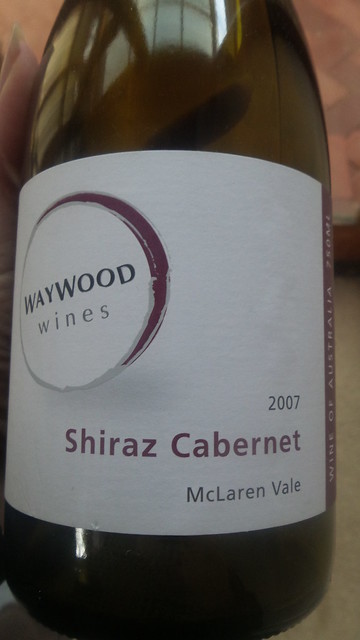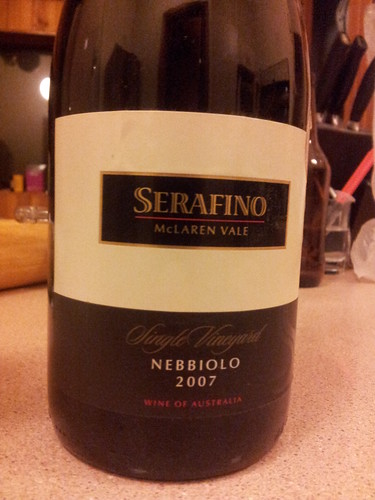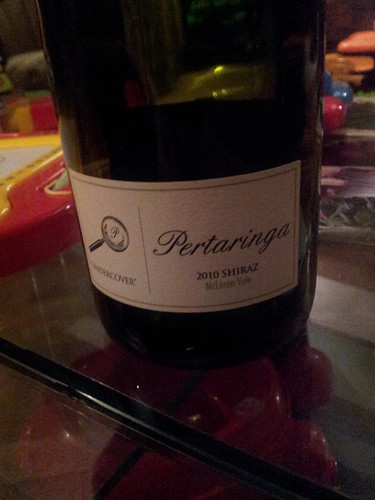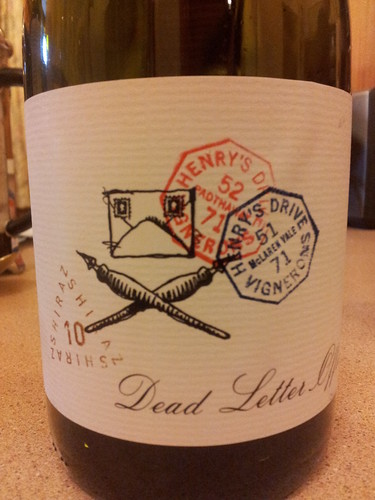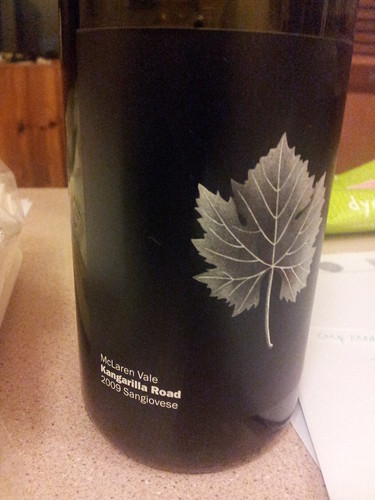I’m sure I’ve mentioned before about my local bottle shop. At a high level, its range is standard – there are lots of wines at the ‘under $20′ price point, there’s a small selection of ’boutique’ wines (small wineries, unusual grape varieties) and a reasonable selection higher shelf reds. It’s not my ideal wine shop but shopping there is not a dire experience, either.
The really cool thing about this shop is that every now and then you can discover absolute gems. You know when you watch antique programs on tv (programs about antiques, not programs that are themselves antiques!) and the presenters often talk about someone having ‘a good eye’ – well, that is how it is with wine and our local shop. It’s less about the eyes and more about a gut feel that the price and the label just don’t really match up.
So quite a long time ago now I was recovering from a cold and was still quite bunged up so I was very keen to spend under $20. I actually did have a particular wine in mind but wasn’t able to find it so I was wandering around the shop in a slightly still-full-of-cold befuddled state when I spotted the WayWood Shiraz Cabernet 2007 marked down. Having met Andrew Wood, WayWood’s owner and winemaker, a couple of years ago I picked it up.
That evening, I opened it, poured myself a glass and realised that while I still couldn’t actually taste very much, it tasted pretty good. I shoved the glass to Andy and asked for his expert opinion. As ever, his expert opinion was tempered by “how much did this cost then?” but between us we decided that the price I paid was significant bang for buck. I checked pricing with Andrew and then headed back to the bottlo the next day to relieve them of the remaining three bottles.
Since then, I have, on and off, been able to enjoy this wine and earlier this week, I opened the last bottle. My last opportunity to write a tasting note.
The wine
Intense, deep ruby in the glass.
The nose shows pronounced licorice, blackcurrant and blackberry with a touch of violet and some spice and fruitcake. It is pleasingly complex and not overwhelmingly fruit-driven. It is starting to show a little maturity.
On the palate, things look really good. There’s good acidity and the tannins are still nice and grippy. This, combined with the ton of juicy black fruit suggests that there’s no rush to drink this wine. Combined with that lovely rich black fruit is some spiciness and even a slight smokiness (or is that smoked meat?). The length is excellent and that attractive fruit is really persistent. There is a touch of alcohol heat there but it is by no means intrusive or detrimental to how much you will enjoy this wine.
The chances are that the only place you can now find this wine is at the WayWood cellar door and it could well cost you considerably more than it cost me.
WayWood Wines. Purchased as a bin end at < $20 per bottle. Limited availability as museum stock at the winery.
Screwcap.
14.5% abv.
